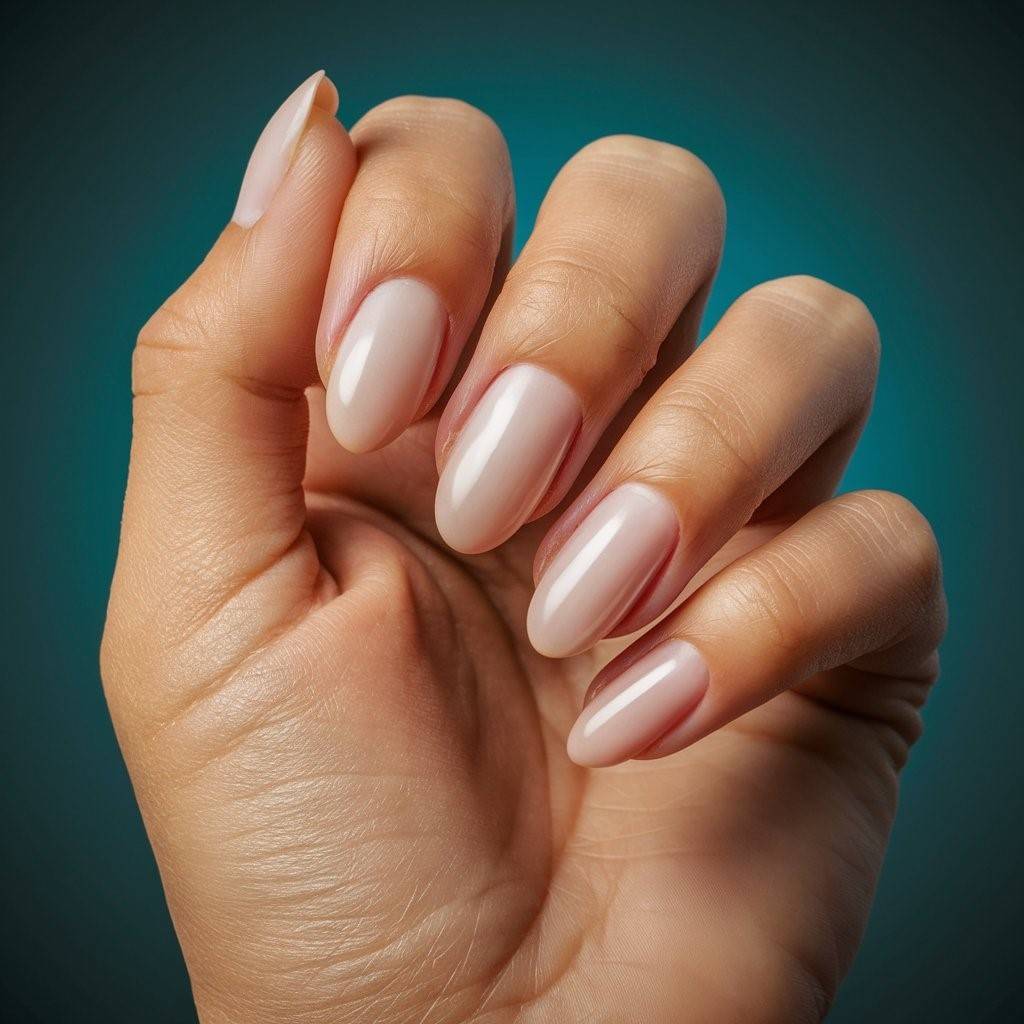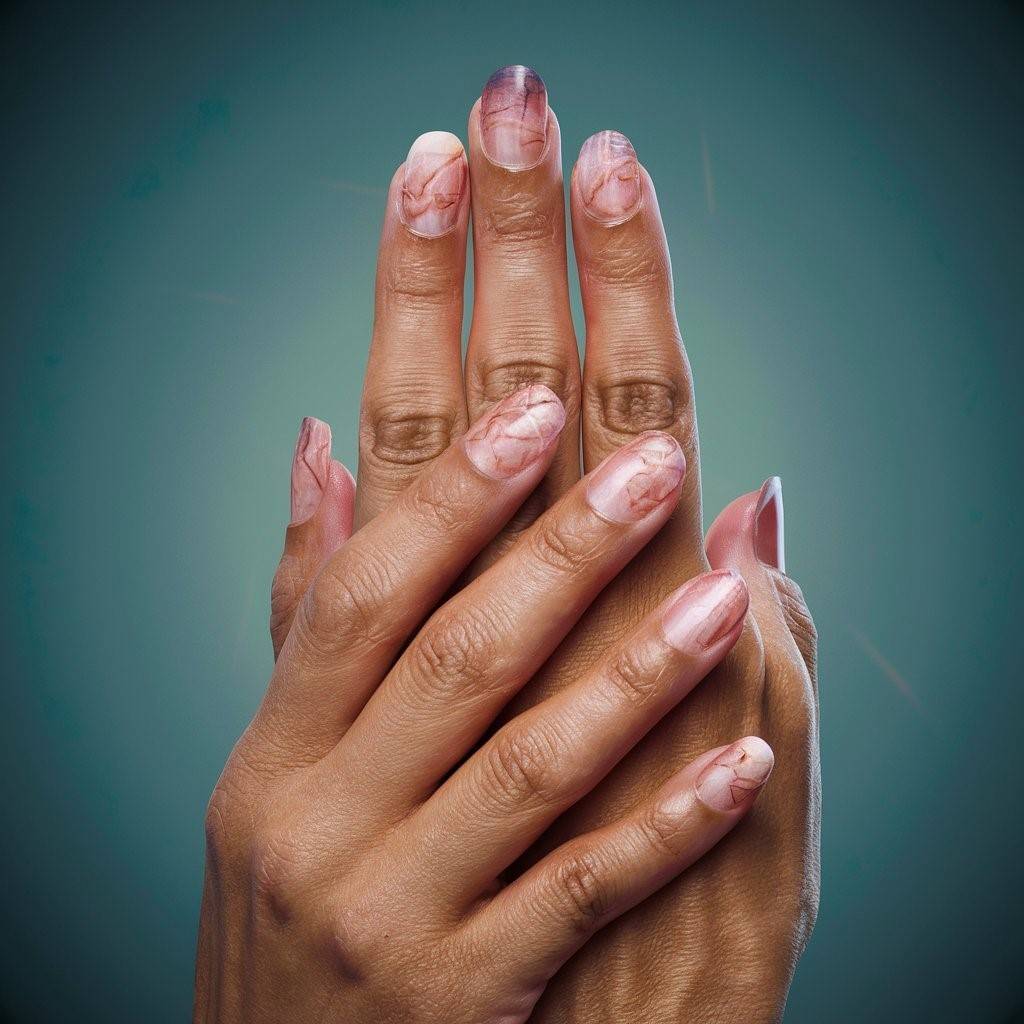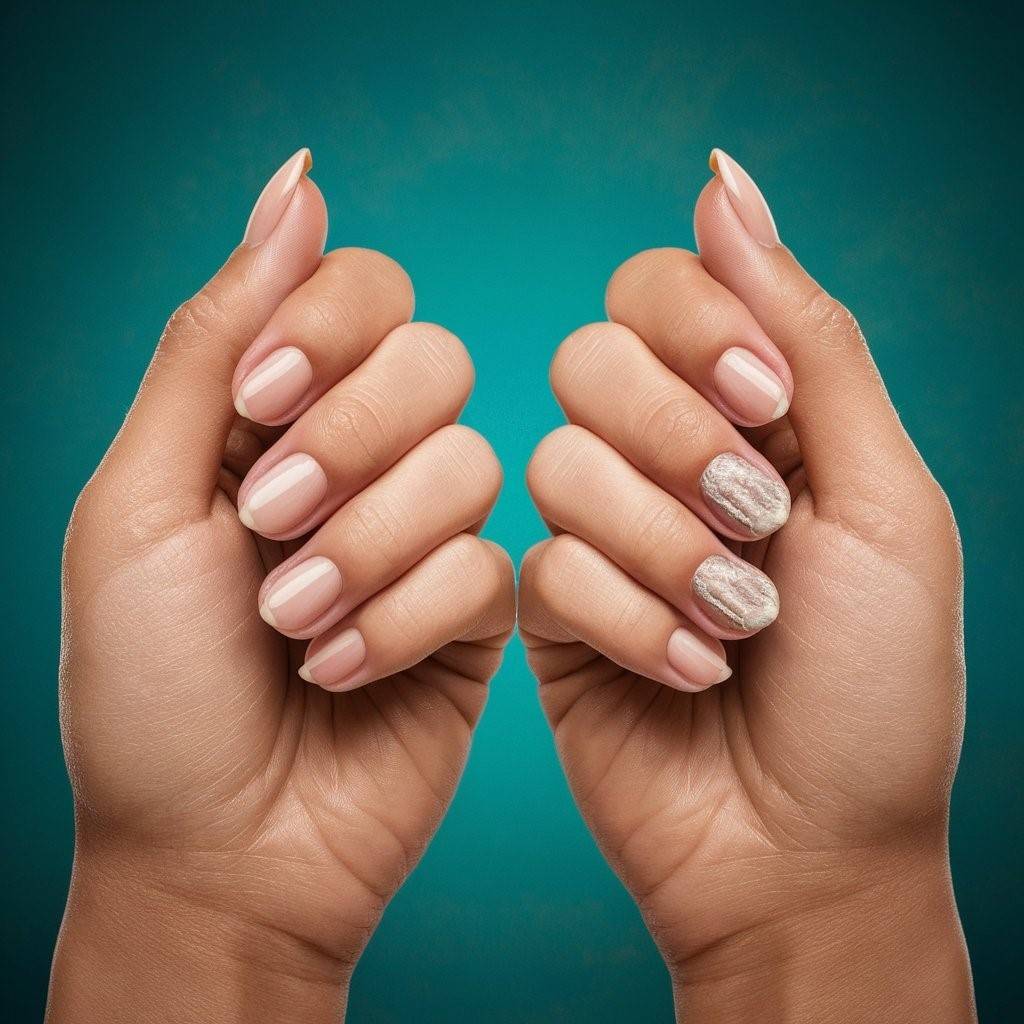Healthy Nails and Unhealthy Nails: Unlock the Secrets to Nailcare.
Discover the telltale signs of healthy nails and unhealthy nails. This comprehensive guide reveals nail care tips, causes of nail problems, and how to achieve strong, beautiful nails.
Key Takeaways
| Feature | Healthy Nails | Unhealthy Nails |
| Appearance | Smooth, uniform colour, slight shine | Discoloured, pitted, ridged, brittle |
| Texture | Strong, flexible | Weak, easily breakable |
| Growth Rate | Consistent growth | Slow or uneven growth |
| Common Signs | None | Brittle nails, white spots, vertical ridges |
Have you ever stopped to admire a perfectly manicured hand? Or perhaps you’re worried about a white spot on your nail? Our nails, often taken for granted, can reveal a lot about our overall health and well-being. Understanding the difference between healthy nails and unhealthy nails is the first step to keeping them strong and beautiful.
What Makes a Nail Healthy?

Healthy nails are a testament to health. They should be:
- Smooth and Uniform: A healthy nail has a consistent, pinkish-white colour with a subtle shine.
- Strong and flexible: Healthy nails can bend slightly without breaking and feel firm to the touch.
- Consistent Growth Rate: Nails typically grow at a rate of 3 millimetres per month.
While some vertical ridges are common and harmless, particularly with age, horizontal ridges, or deep pitting, can signal underlying health concerns.
Unhealthy Nails: Signs to Watch Out For

Changes in Color: Discoloration of the nail plate can be a red flag (pun intended!). Here’s a breakdown of some common colour changes and their potential causes:
- Yellow Nails: Often caused by fungal infections, smoking, or certain medications.
- White Nails: Can be a sign of trauma, nutritional deficiencies, or liver problems.
- Dark Lines: A single dark line under the nail might indicate melanoma, a serious form of skin cancer. It’s crucial to see a doctor immediately if you notice this.
- Bluish Nails: This may indicate a lack of oxygen reaching the nail bed because of respiratory problems.
Brittle Nails: Nails that break or split easily can be caused by dehydration, vitamin deficiencies, excessive nail polish use, or exposure to harsh chemicals.
Changes in Shape: Spoon-shaped nails (koilonychia) or clubbed nails (where the tips curve downwards) can be associated with certain medical conditions.
Pain or Swelling: Redness, swelling, or pain around the nail can indicate infection and necessitate a doctor’s visit.
Read more about Vitamins for Stronger Nails: Top 8 Vitamins for Healthier, Stronger Nails
Understanding Healthy Nails and Unhealthy Nails: A Deeper Dive
Diet and Healthy Nails
Just like the rest of your body, your nails thrive on a balanced diet rich in essential nutrients. Biotin, a B vitamin, plays a crucial role in nail health. Deficiencies can lead to brittle nails. Here are some dietary tips for healthy nails and unhealthy nails:
- Incorporate protein: Hair and nails are primarily composed of keratin, a protein. Include lean protein sources like fish, chicken, or beans in your diet.
- Don’t skimp on healthy fats: Omega-3 fatty acids, found in fatty fish like salmon, promote healthy hair, skin, and nails.
- Load up on fruits and vegetables: A diet rich in fruits and vegetables provides essential vitamins and minerals that nourish your nails from within.
Hydration is Key
Dehydration can wreak havoc on your nails, making them dry and brittle. Aim to drink plenty of water throughout the day to keep your nails hydrated and healthy.
Nail Care Habits
Simple nail care practices can go a long way in promoting healthy nails and unhealthy nails. Here are some tips:
- Moisturize regularly: Apply lotion or cuticle oil to keep your nails and cuticles hydrated.
- Wear gloves when doing chores: Harsh chemicals in cleaning products can damage your nails. Wear gloves to protect them.
- Limit nail polish use: While the occasional nail polish application is fine, constant use can dry out your nails. Take breaks between polishes to allow your nails to breathe.
- Practice hygiene: Keep your nails clean and avoid biting them, which can harbour bacteria and lead to infections.
- Trim nails properly: Use sharp nail clippers and trim your nails straight across, then gently file the edges to avoid snagging.
Underlying Medical Conditions and Nail Health
Certain medical conditions can manifest in changes to your nails. For instance, psoriasis or eczema can cause pitting or discoloration of the nails. Thyroid problems can lead to brittle or ridged nails. If you notice any concerning changes in your nails, consulting a doctor is essential to rule out any underlying medical issues.
Healthy Nails and Unhealthy Nails: Discover the Key to Nail Care
Maintaining Healthy Nails: Beyond the Basics
Taking care of your nails goes beyond just avoiding bad habits. Here are some additional tips to promote strong and healthy nails:
- Supplements: Consider adding a biotin supplement to your routine. Biotin deficiencies can contribute to brittle nails. However, it’s always best to consult your doctor before starting any new supplements.
- Strengthening Treatments: Nail hardeners can be helpful for temporarily strengthening weak nails. However, overuse can make nails brittle, so use them sparingly.
- Manicures and Pedicures: While professional nail treatments can enhance the appearance of your nails, choose salons that prioritize hygiene and use sterilized tools. Choose treatments that focus on nail health, like paraffin wax baths or deep conditioning treatments.
Common Nail Concerns Addressed
- White Spot: Small white spots on the nails are usually harmless and cause minor injuries to the nail bed. They typically grow out with the nail.
- Vertical Ridges: Vertical ridges are a common occurrence, especially with age, and are nothing to worry about. However, deep or very prominent ridges might warrant a doctor’s visit to rule out any underlying conditions.
- Ingrown Nails: Ingrown nails occur when the corner of the nail grows into the surrounding skin, causing pain and swelling. Proper nail trimming techniques can help prevent ingrown nails. If you experience a persistent ingrown nail, consult a doctor to avoid potential infection.
Healthy Nails and Unhealthy Nails: FAQs
What is the difference between healthy and unhealthy nails?
Healthy nails are smooth, uniformly coloured, and have a slight shine. They are strong, flexible, and grow at a consistent rate. Unhealthy nails can exhibit various signs, including discoloration, brittleness, changes in shape, or pain around the nail bed.
Can fingernails show signs of illness?
Yes, fingernails can sometimes show signs of underlying health conditions. Discoloration, brittleness, or changes in shape can be indicators of various health issues. If you notice any concerning changes in your nails, consulting a doctor is recommended.
What is the colour of healthy nails?
Healthy nails should have a pinkish-white colour with a subtle shine. However, slight colour variations can occur.
How to tell if nails are damaged?
There are several signs of damaged nails, including:
- Brittle nails: Easily break or split
- Discoloration: Yellowing, white spots, or dark lines
- Changes in shape: Spoon-shaped or clubbed nails
- Ridges: Deep horizontal ridges (vertical ridges are usually harmless)
- Pain or swelling: Redness or pain around the nail bed
See a doctor if you experience any of these signs, especially if they persist or worsen.
Conclusion
Healthy nails and unhealthy nails have distinct appearances that can indicate underlying nutritional deficiencies, medical conditions, or poor nail care habits. By paying attention to the appearance and condition of your nails, you can gain valuable insights into your overall health. Taking care of your nails through proper diet, hydration, and nail care habits promotes strong and healthy nails. If you notice any concerning changes, don’t hesitate to consult your doctor to rule out any underlying medical issues. Remember, healthy nails are not just about aesthetics; they are a window to your well-being.



